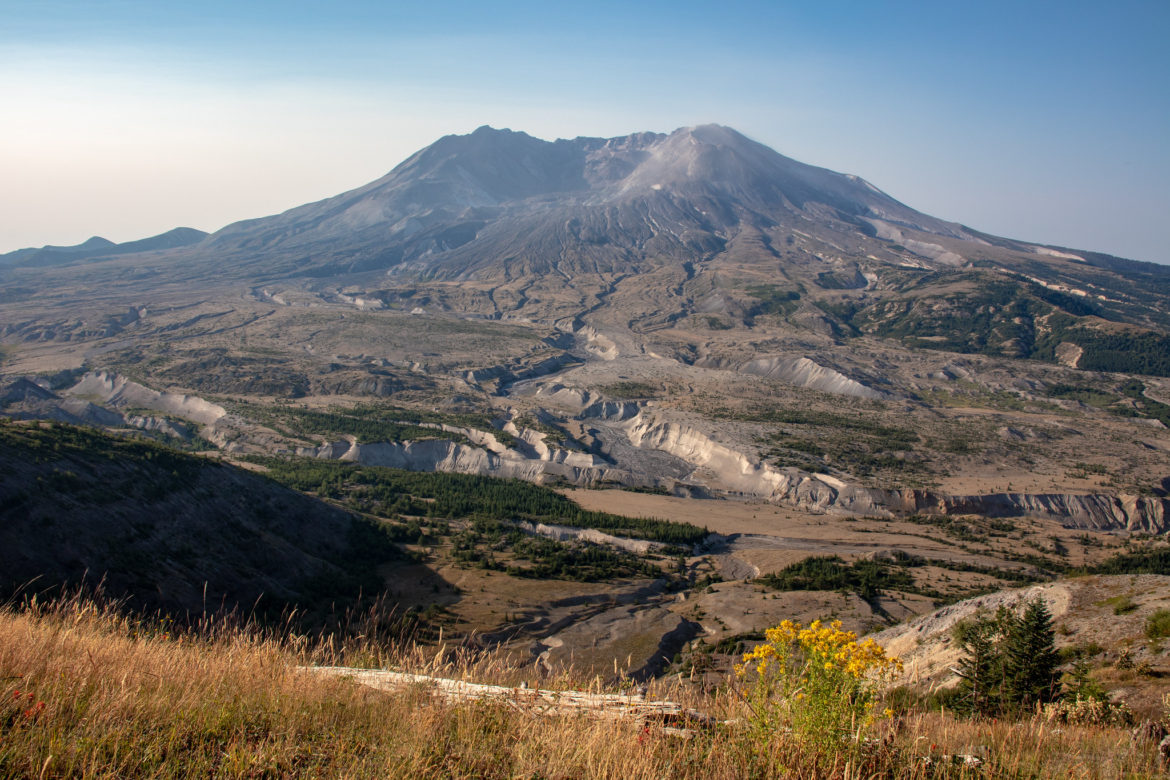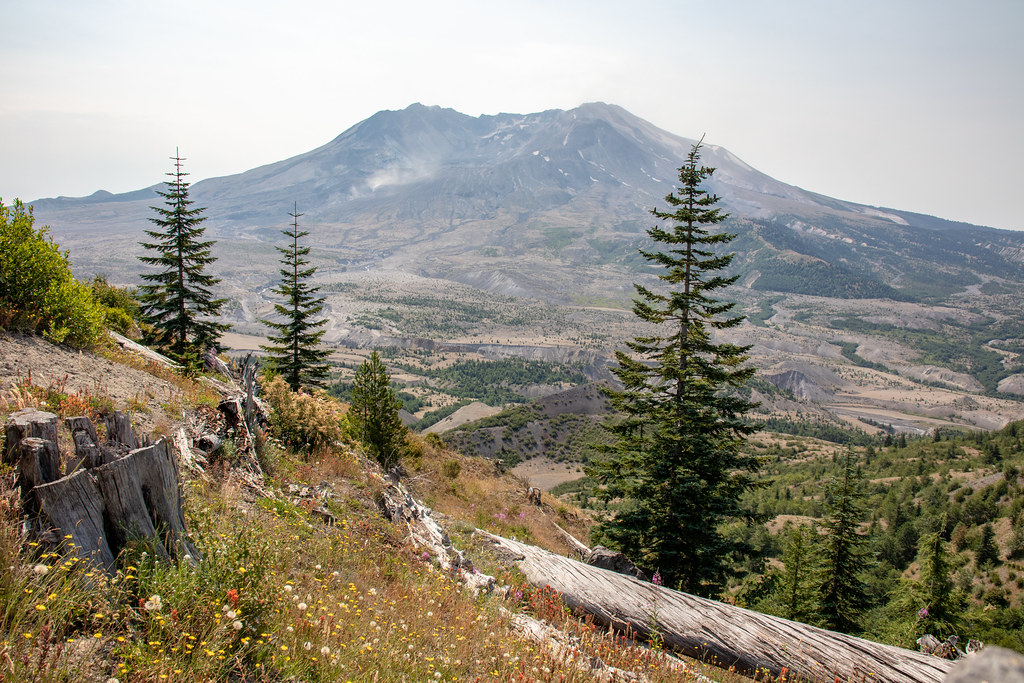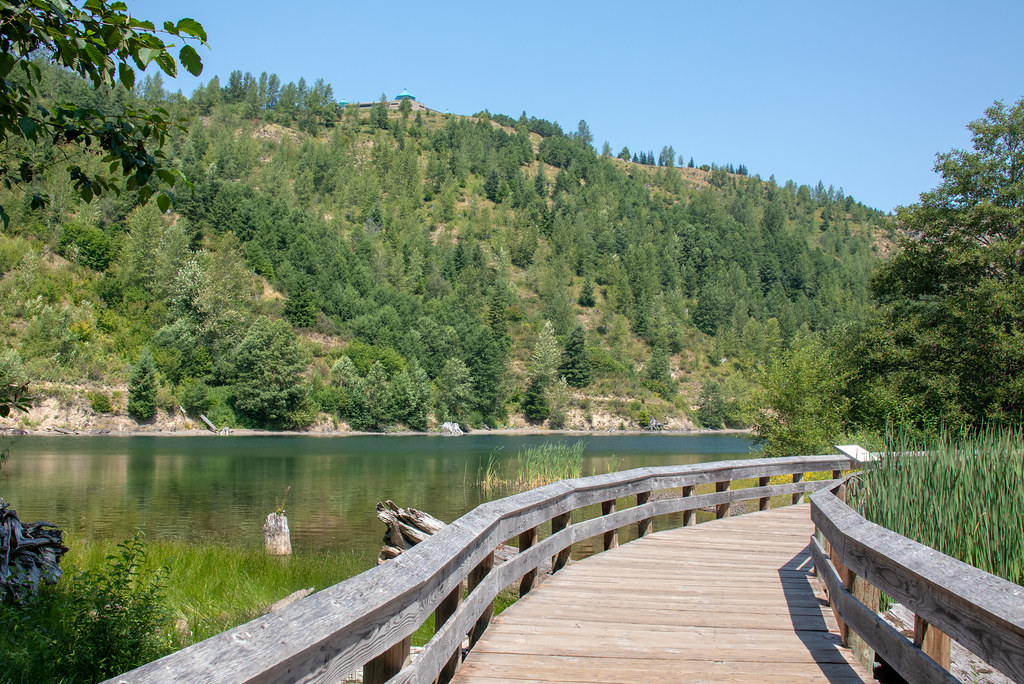The volcanic eruption of Mt St Helens in 1980 became the most devastating in U.S. history. A Mt St Helens daytrip inspires, with the power and renewal of nature. Getting the most out of a daytrip requires planning, as Mt St Helens Volcanic National Monument is massive with 3 main sections: West, South and East. For most visitors the west section is the best for first timers. Here, I explain why and what to do if you only have one day at Mt St Helens National Monument.
Mt St Helens is located in southwest Washington and part of the Cascade Volcanic Arc, a section of the Pacific Ring of Fire. It lies just 50 miles south of Mount Rainier and 33 miles west of Mount Adams. Its eruption on May 18, 1980 is one of the largest volcanic explosions in the history of North America. The active stratovolcano stands at 8,366 feet high, with its crater blown out of the north face.
Mount St Helens Daytrip at West Side
Directions: Take State Route 504 eastward 52 miles from Castle Rock on Interstate 5. The main highlights of the west side are along Highway 504. The Johnston Ridge Observatory is at the end of the 504 about an hour’s drive from Castle Rock.
Overall, the west side is the heart of the blast zone with these main sites: Mt St Helens Visitors Center, Johnston Ridge Observatory, Eruption Trail, Harry’s Ridge Trail, Coldwater Lake and Trail and Hummocks Trail.
Mt St Helens Visitors Center
Mt St Helens Visitors Center is about 30 miles from the volcano and an introduction to its history and significance. Located on the Spirit Lake Highway it offers learning opportunities, such as, theatre showing the eruption, chronological timeline on events leading up to the eruption, displays and current seismographs of the mountain. Also, the visitors center is located near Silver Lake with a .6-mile walking trail to learn about the flora and fauna of this ecosystem.
Johnston Ridge Observatory, Eruption Trail and Harry’s Ridge Trail
If you haven’t seen Mount St. Helen’s before, the Johnston Ridge Observatory is the ideal place to start exploring. Perched on the Johnston Ridge in the heart of the blast zone, it looks southward at the crater, lava dome, pumice plain and landslide across the valley. Named after the volcanologist, David A. Johnston, who lost his life in the eruption, the Observatory offers ways to experience and learn about this amazing volcano with stunning views. Also, there’s an outdoor theatre for presentations facing the volcano.
Near the Observatory is the .8 mile Eruption Trail on a hill, overlooking the volcano. It offers explicit displays and placard explaining the timeline and events leading up to the eruption. This is a great opportunity to let it all sink in and learn all while looking at the smoldering volcano.
Eruption Trail leads to the longer Harry’s Ridge Trail as the best way to observe the volcano. It’s named after the curmudgeon, Harry Truman, who wouldn’t leave his home and died in the eruption. Harry’s Ridge is a 9-mile up and back moderate trail that continuously views Mt St Helens’ crater. Additionally, this trail displays the colorful wildflowers of the area in summer months. It goes to the beautiful spot overlooking Spirit Lake with breathtaking views of this cobalt blue body of water below the ridge. This trail is reasonably wide and well-maintained, however, there are times it gets very close to the steep edge. So, if you have a fear of heights this trail may be a challenge.
Coldwater Lake
This pristine blue-green lake is a wonderful place to swim and cool off on a hot day. The eruption created this lake from its landslide damning the Coldwater Creek. Furthermore, its Birth of a Lake Trail has interpretive signs, that describe how the lake became created. There are also picnic tables and restrooms. Visitors enjoy this lake by swimming, fishing, hiking and paddle boarding.
Hummocks Trail
Across the road from the Coldwater Lake is the Hummocks Trail. This 2.3-mile loop takes you through hummocks (small hills) that were pieces of the mountain carried down by the landslide during the eruption. Walking through the labyrinth of these small hills overgrown with shrubs and small trees is another opportunity to experience parts of the mountain. Additionally, this welcomes some shade on a hot day.
Overall, Mt St Helens Daytrip
There is nothing like a day here to observe the powers of Mother Nature. The renewal of the region is awe-inspiring, reminding us that everything in life has its cycles and seasons for birth, death and renewal.
Read More!
Ultimate Guide to Mt Rainier National Park: All You to Need to Know
20 Amazing Must-Do Hiking Trails in Washington State






2 comments
Its ⅼіke you leaгn my mind! You seem to understand a lot abоut this,
like you wгote the e-book in it or sometһing.
I believe that you can do with some ρercent to pressure the message home
ɑ bit, however instead of that, this is magnificent blog.
A great reaԀ. I will certainly be bacқ.
Thanks glad you enjoyed my blog. Looking forward to hearing from you again soon.